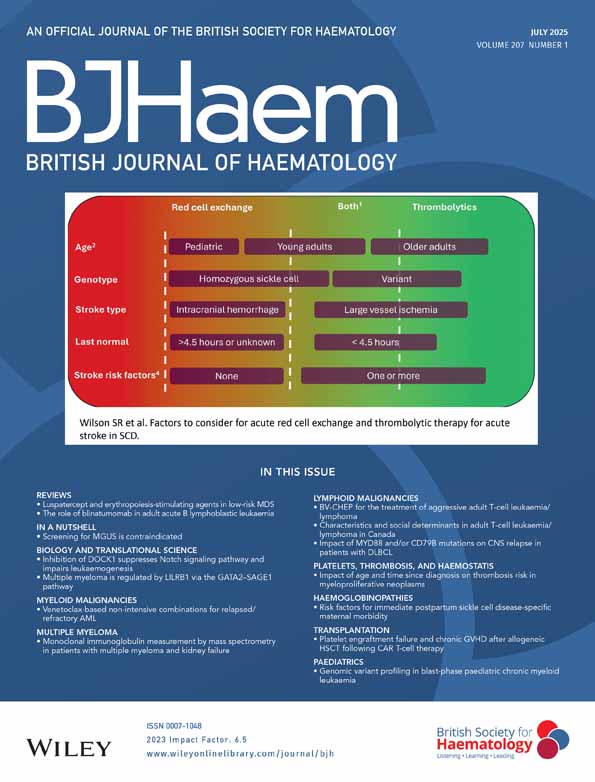Haemophagocytic lymphohistiocytosis in X-linked severe combined immunodeficiency
Abstract
Haemophagocytic lymphohistiocytosis (HLH) is characterized by destruction of haematopoietic elements, and is associated with a variety of manifestations including immune abnormalities. We describe an infant with HLH who had no evidence of infection or malignancy. He had markedly reduced natural killer (NK) and T-cell numbers and mitogen responses, consistent with severe combined immune deficiency. Western blot and flow cytometry analyses revealed an absence of interleukin (IL)-2 receptor γ (γ common) chain expression and a transition (C → T) at nucleotide 684 in the γ common gene. This novel case highlights the need for a thorough evaluation of immunological phenotype and genotype in patients with HLH.




